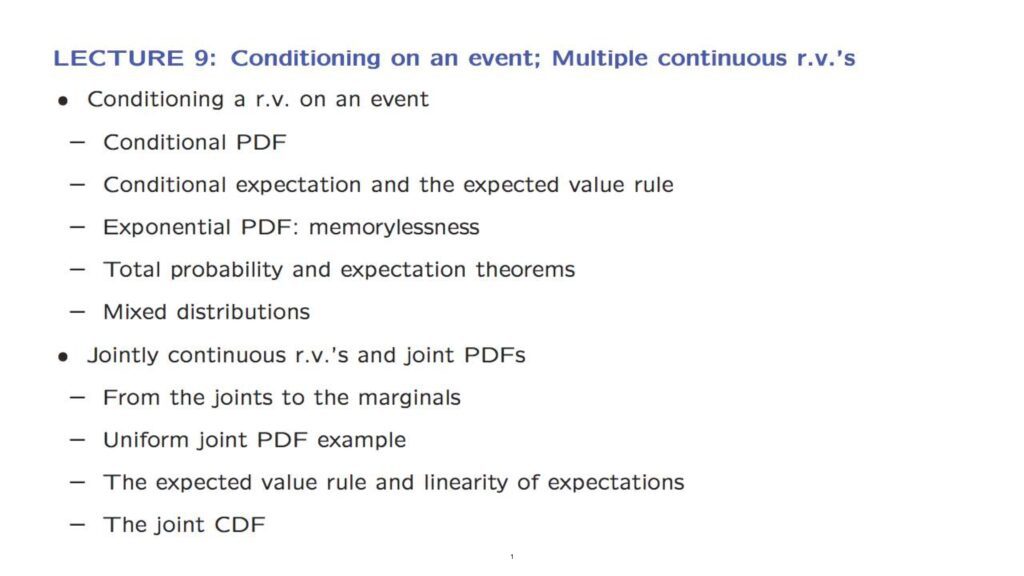In this lecture, we continue our discussion of continuous random variables.
We will start by bringing conditioning into the picture and discussing how the PDF of a continuous random variable changes when we are told that a certain event has occurred.
We will take the occasion to develop counterparts of some of the tools that we developed in the discrete case such as the total probability and total expectation theorems.
In fact, we will push the analogy even further.
In the discrete case, we looked at the geometric PMF in some detail and recognized an important memorylessness property that it possesses.

In the continuous case, there is an entirely analogous story that we will follow, this time involving the exponential distribution which has a similar memorylessness property.
We will then move to a second theme which is how to describe the joint distribution of multiple random variables.
We did this in the discrete case by introducing joint PMFs.
In the continuous case, we can do the same using appropriately defined joint PDFs and by replacing sums by integrals.
As usual, we will illustrate the various concepts through some simple examples and also take the opportunity to introduce some additional concepts such as mixed random variables and the joint cumulative distribution function.